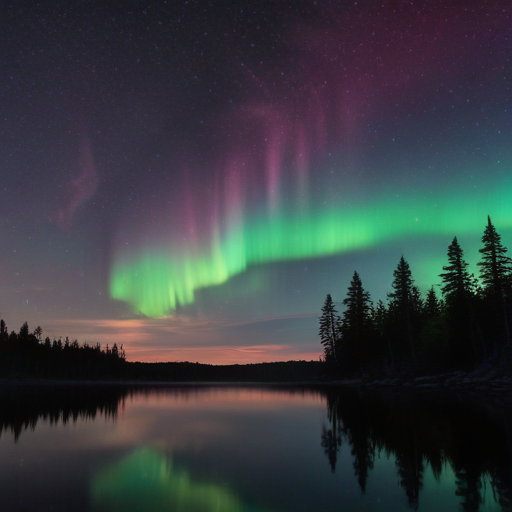A Geomagnetic Storm Watch has been issued for late Monday into early Tuesday, raising expectations that the Northern Lights could illuminate skies across Michigan and much of the northern United States and Canada over Labor Day weekend.
Forecast details from the NOAA/NWS Space Weather Prediction Center indicate the storm could reach G-2, or moderate, levels on Monday evening, then intensify to G-3, considered strong, overnight into Tuesday. The event traces back to a full-halo coronal mass ejection observed on Saturday, which expanded outward in all directions and formed a halo around the Sun as it heads toward Earth.
A full-halo CME means material is erupting from the Sun in a wide, sunward-encompassing way. When such eruptions reach Earth, they can trigger magnetic storms strong enough to disrupt satellites and power grids. At the same time, they can produce spectacular auroral displays, painting skies green and purple across dark, clear horizons.
The forecast suggests arrival late afternoon on September 1 and continuing into the early hours of September 2. Forecasters say confidence in Earth arrival is high, though the exact timing and intensity remain uncertain, with the potential for a brief spike up to G4 under favorable conditions.
Where you might see the aurora depends largely on sky conditions and light pollution. If skies clear, the Northern Lights could be visible across northern border states and portions of the lower Midwest, extending into parts of Canada and the northern Plains. The display could be best after sunset and into the late-night hours, weather permitting.
Past aurora displays in Michigan include sightings near Cedar Springs on May 10, 2024, illustrating how even springtime skies can light up when solar activity aligns with clear, dark conditions.
Viewing tips to maximize your chances:
– Find a dark site away from city lights; the darker the sky, the more vivid the aurora.
– Check local sky-and-weather forecasts for clear skies and moon phases (a brighter moon can wash out faint auroral glows).
– Allow time after sunset; peak displays can occur in the late-evening to pre-dawn hours.
– Dress warmly and bring something comfortable to observe for extended periods.
– If you’re into photography, use a tripod and long exposure settings to capture the greens and purples.
Keep an eye on updates from the Space Weather Prediction Center, as forecasts can shift with changing solar activity. While the potential for beautiful auroras is exciting, forecasters also warn that geomagnetic storms can affect satellites, communications, and power grids, so plan accordingly if you rely on these services.
In short, a holiday weekend geomagnetic storm offers a promising chance to see vivid Northern Lights across a broad swath of North America, weather permitting, with the usual caveats about possible impacts to space- and ground-based technologies.
